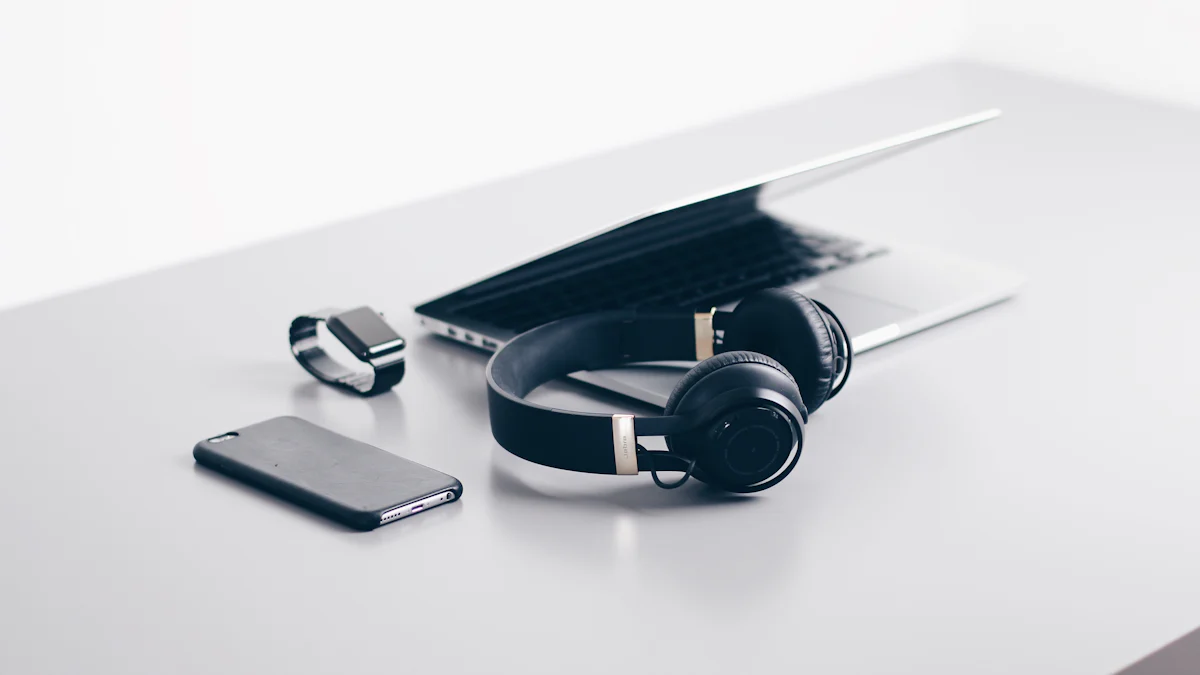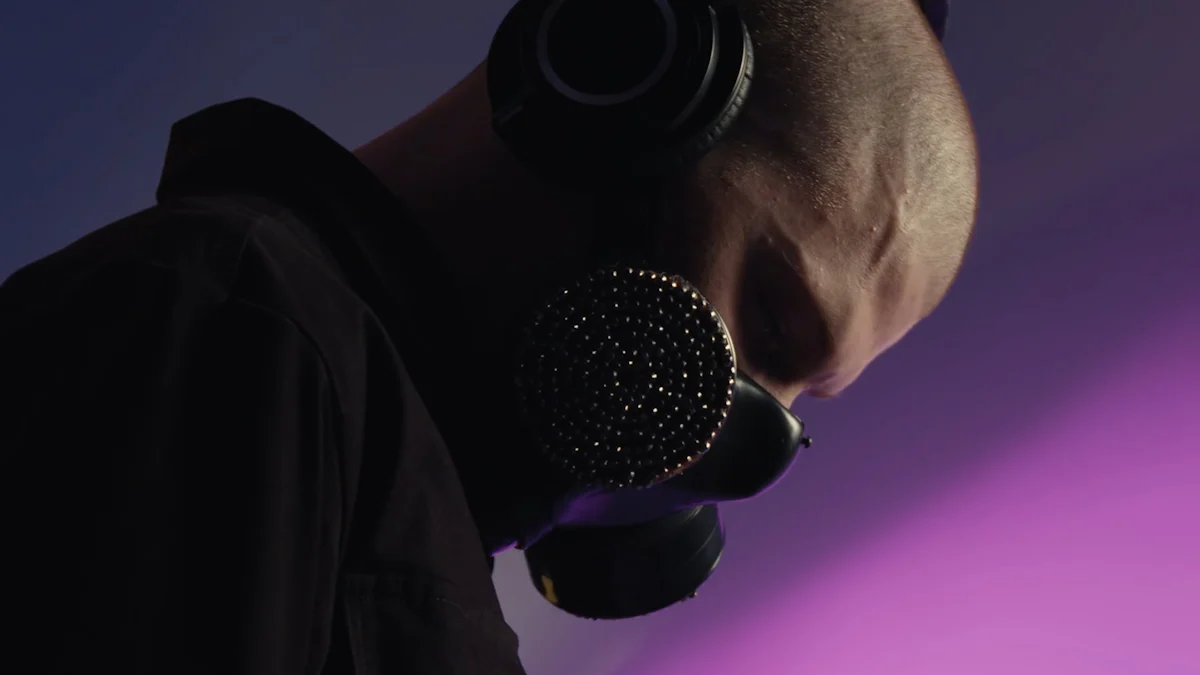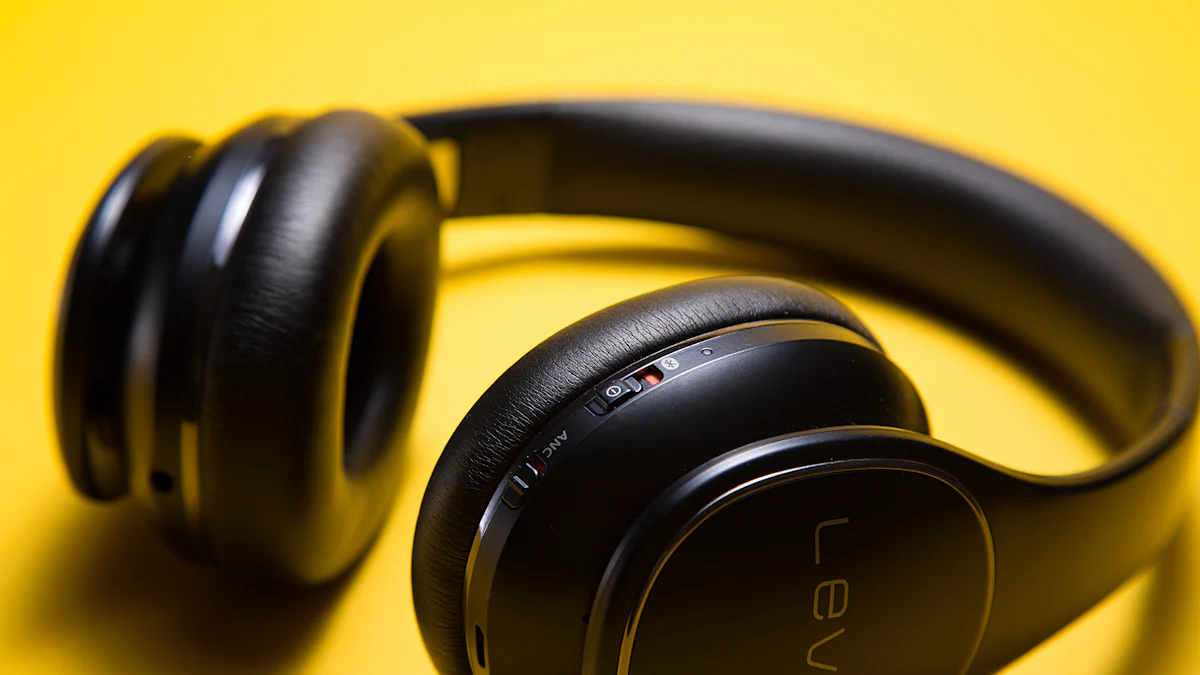How Do Noise-Cancelling Headsets Function?

Noise-cancelling technology transforms your listening experience by using destructive interference. This principle involves creating sound waves that counteract unwanted noise. Amar Bose, the visionary behind Bose Corporation, pioneered this concept. ANC headphones work by employing built-in microphones to capture ambient sounds. These microphones generate opposing sound waves, effectively reducing noise. A noise-cancelling microphone headset for superior voice clarity in noisy spaces exemplifies this innovation, offering adjustable active noise-cancelling features. As you explore the basics of noise cancellation, you'll discover how ANC technology enhances audio clarity, allowing you to enjoy your favorite tunes without distractions.
Basics of Noise Cancellation
Understanding Sound and Noise
Sound surrounds you every day, from the gentle hum of a refrigerator to the bustling noise of city traffic. Sound travels in waves, which your ears perceive as different pitches and volumes. Noise, however, refers to unwanted or disruptive sounds that can interfere with your ability to concentrate or relax. For instance, the constant chatter in a busy café might distract you from reading a book. In such environments, noise-canceling technology becomes invaluable. It helps create a quieter space by reducing or eliminating these unwanted sounds.
The Principle of Destructive Interference
Active noise cancellation (ANC) relies on a fascinating concept known as destructive interference. This principle involves generating sound waves that are equal in amplitude but opposite in phase to the unwanted noise. When these waves meet, they cancel each other out, resulting in a quieter environment. Imagine two waves in the ocean colliding and flattening each other. Similarly, ANC technology uses this principle to neutralize ambient noise. This process allows you to enjoy your music or podcasts without distractions.
Microphones play a crucial role in the effectiveness of ANC systems. These tiny devices continuously monitor the surrounding sounds. They detect ambient noise and send this information to the headset's internal processor. The processor then generates anti-noise signals that counteract the detected sounds. Some advanced ANC earbuds, like those from Bose and Dyson, feature multiple microphones both inside and outside the earcups. This design enhances their ability to detect and cancel noise from various directions, providing you with superior sound clarity.
Microphones play a crucial role in the effectiveness of ANC systems. These tiny devices continuously monitor the surrounding sounds. They detect ambient noise and send this information to the headset's internal processor. The processor then generates anti-noise signals that counteract the detected sounds. Some advanced ANC earbuds, like those from Bose and Dyson, feature multiple microphones both inside and outside the earcups. This design enhances their ability to detect and cancel noise from various directions, providing you with superior sound clarity.
Noise-canceling headphones, including ANC earbuds, offer a sanctuary of silence in noisy environments. They filter out ambient noise, allowing you to focus on your audio content. However, it's essential to note that noise cancellation effectiveness can vary based on the type of noise. Continuous sounds, like engine noise, are easier to cancel than sudden, sharp sounds. Additionally, while noise-canceling technology provides control over surrounding sounds, it may also lead to aural isolation and discomfort if used for extended periods.
Components of Noise Cancelling Headphones

Earpiece Design and Its Importance
The design of the earpiece plays a crucial role in the effectiveness of noise-cancelling headphones. You might wonder why this is so important. The earpiece acts as a barrier, physically blocking external sounds from reaching your ears. This is known as passive noise isolation. A well-designed earpiece fits snugly around your ear, creating a seal that minimizes sound leakage. This seal enhances the performance of active noise cancellation by reducing the amount of ambient noise that needs to be canceled.
Manufacturers often use materials like memory foam or silicone for earpads. These materials conform to the shape of your ears, providing comfort and improving the seal. The shape and size of the earpiece also matter. Over-ear designs typically offer better passive noise isolation compared to on-ear or in-ear models. When you choose headphones, consider how the earpiece design will affect your listening experience.
Microphone Functionality
Microphones are the unsung heroes of active noise cancellation. They continuously listen to the sounds around you. By capturing ambient noise, these microphones enable the headphones to generate anti-noise signals. This process involves creating sound waves that are 180 degrees out of phase with the incoming noise, effectively canceling it out.
Most noise-cancelling headphones use a combination of feedforward and feedback microphones. Feedforward microphones are placed on the outside of the ear cups. They detect external sounds before they reach your ears. Feedback microphones, on the other hand, are located inside the ear cups. They listen to the sounds that have already penetrated the ear cup. This dual-microphone setup allows for superior noise-cancelling performance.
When selecting noise-cancelling headphones, pay attention to the microphone configuration. It significantly impacts the overall effectiveness of active noise cancellation.
Active vs. Passive Noise Cancellation

What is Active Noise Cancellation?
Active noise cancellation (ANC) uses advanced technology to reduce unwanted sounds. You will find tiny microphones in ANC headphones that continuously listen to the surrounding noise. These microphones send the noise data to a processor inside the headphones. The processor then creates sound waves that are 180 degrees out of phase with the incoming noise. This process, known as destructive interference, effectively cancels out the noise. ANC works best on steady, low-to-medium frequency sounds like traffic or airplane noise. It requires power to function, usually provided by a rechargeable battery.
What is Passive Noise Cancellation?
Passive noise cancellation, also known as passive noise isolation, relies on the physical design of the headphones to block out noise. You will notice that these headphones have well-designed ear cups that fit snugly around your ears. This design creates a seal that prevents external sounds from entering your ear canal. Materials like memory foam or silicone are often used for the ear pads to enhance comfort and improve the seal. Passive noise cancellation does not require any power source, making it a simpler and more cost-effective option. It is particularly effective at dampening high-frequency sounds that ANC systems might struggle with.
Comparing Use Cases and Effectiveness
When choosing between active and passive noise cancellation, consider your environment and needs.
-
Active Noise Cancellation:
-
Best for environments with constant, low-frequency sounds like airplane cabins or busy streets.
-
Requires power, so you need to charge the headphones regularly.
-
Offers superior noise reduction for continuous sounds.
-
Passive Noise Cancellation:
-
Ideal for blocking out sudden, high-frequency noises.
-
Does not require power, making it more convenient for long trips.
-
Relies on the physical design of the headphones for noise reduction.
Effectiveness of Noise-Canceling Headphones
Ideal Environments for Noise Cancellation
You will find noise-canceling headphones most effective in environments with constant background noise. Imagine sitting in an airplane cabin where the engine's hum surrounds you. Here, active noise cancellation (ANC technology) shines by reducing these continuous low-frequency sounds. Similarly, busy streets filled with traffic noise provide another ideal setting. The ANC technology in your headphones, like those from Bose, works to create a quieter listening experience.
In open office spaces, noise-canceling headphones help you concentrate. They minimize distractions from conversations and office equipment. Public transportation, such as buses or trains, also benefits from ANC. The technology reduces the rumble of engines and chatter of fellow passengers. By using ANC headphones in these environments, you enhance your focus and enjoy your audio content without interruptions.
Potential Side Effects and Limitations
While noise-canceling headphones offer many benefits, you should be aware of potential side effects. Some users experience a sensation of pressure in their ears. This feeling occurs because ANC creates sound waves that counteract ambient noise. Your brain may perceive this as a change in air pressure, leading to discomfort.
Another limitation involves the type of noise. ANC excels at reducing continuous sounds but struggles with sudden, sharp noises. For example, a door slamming or a dog barking might still reach your ears. Additionally, wearing noise-canceling headphones for extended periods can lead to aural isolation. You might miss important sounds around you, such as announcements or alarms.
Battery life is another consideration. Active noise cancellation requires power, so you need to charge your headphones regularly. Without power, the ANC feature becomes inactive, reducing the effectiveness of your headphones. Despite these limitations, many users find the benefits of noise-canceling technology outweigh the drawbacks. By understanding these factors, you can make informed decisions about when and where to use your ANC headphones.
Are Noise-Cancelling Headphones Worth It?
Evaluating the Cost vs. Benefits
When considering noise-canceling headphones, you might wonder if they justify their price. These headphones often come with a hefty price tag, which can be a financial barrier for many. However, they offer significant benefits that might make them worth the investment.
-
Enhanced Listening Experience: Active noise cancellation technology allows you to enjoy music or podcasts without distractions. This feature is particularly valuable in noisy environments like airplanes or busy streets.
-
Improved Focus and Productivity: By reducing ambient noise, these headphones help you concentrate better, whether you're working in an open office or studying in a bustling café.
-
Hearing Protection: Noise-canceling headphones can protect your hearing by allowing you to listen at lower volumes. You won't need to crank up the volume to drown out background noise.
Despite these advantages, the cost remains a significant factor. Premium models can be expensive, limiting access for a broader population. Yet, as technology advances, prices may decrease, making these headphones more accessible.
Noise-canceling technology transforms your listening experience by reducing unwanted sounds. It proves invaluable in various settings, such as busy streets or open offices, where you need to focus or maintain privacy. When considering a purchase, evaluate your environment and needs. If you frequently encounter constant noise, active noise cancellation headphones offer significant benefits. As technology advances, future models may allow you to selectively hear important sounds, enhancing their utility. Investing in noise-canceling headphones can improve your audio experience and productivity, making them a worthwhile consideration.
See Also
Jabra PanaCast 50 Or Coolpo AI Huddle PANA: Which Is Superior?
Selecting Your Winner: Human Versus Robot 360 Speakers
A Comprehensive Guide To Mastering Computer Audio Visual Skills
Evaluating Active USB AV Adapters: Certified Against Integrator Series
